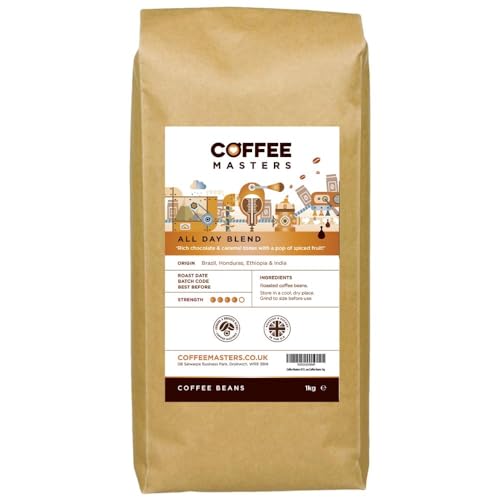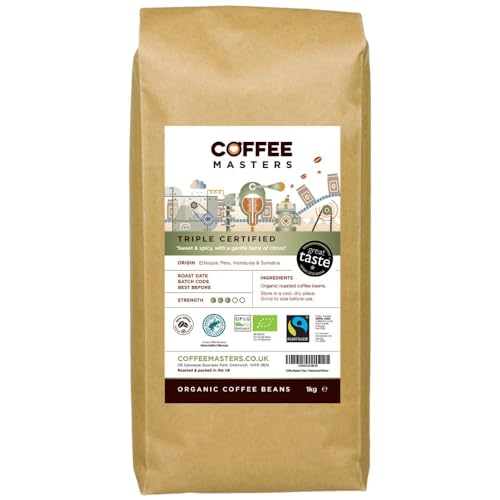The Little-Known Benefits Of Coffee Bean
페이지 정보

본문
 What Are Coffee Beans?
What Are Coffee Beans?The coffee beans that are used to brew coffee are actually the seeds of a berry called a coffee cherry. The coffee plant is perennial, which means that it will return year after year.
 Coffee beans have high levels of specific compounds - including caffeine, so they should be consumed in moderation. Find out more about this well-known seed!
Coffee beans have high levels of specific compounds - including caffeine, so they should be consumed in moderation. Find out more about this well-known seed!Origin
The roasted seeds of the coffee plant are used to make coffee, a beverage that is brewed. The beans are one of the most popular and lucrative international commodities. The coffee plants are evergreen, woody plants that thrive in tropical climates. The Bean Belt includes the areas close to the Tropic of Cancer, and the Tropic of Capricorn.
The most well-known legend of coffee's genesis began with the goat herder Kaldi in Ethiopia. He discovered that the bright red berries produced by certain coffee plants stimulated his goats. Kaldi shared his discovery with the abbot of a nearby monastery, who brewed a drink using the berries. The energizing effects of the berries are spread throughout the monastery.
Currently coffee beans are produced by two major varieties of Coffea plants: Arabica and Robusta. The latter is found predominantly in Africa and Indonesia and is typically less expensive than arabica. In addition to the major varieties, there are a variety of smaller, specialty beans that are a mixture of robusta and arabica. These beans are referred to as peaberries and are more flavorful than standard beans.
During the process of roasting beans lose their moisture, which could result in them becoming stale and bitter. It is important to only use fresh, high-quality beans for your coffee bean shop.
Flavor
The bean's type, temperature and processing method can affect the four elements of taste, which are bitterness and acidity as well as sweetness and saltiness. These elements can be mixed in a variety of ways to create different flavor profiles, ranging from sweet and fruity to nutty or even smoky.
When coffee beans in bulk beans are heated, they react with the amino acids contained in their seeds and produce hundreds of aromatic compounds that affect their flavor. This reaction is referred to as the Maillard Reaction, and it occurs in virtually all cooking. The result is that the flavor of roasted coffee is a reflection of these substances.
While the Maillard Reaction affects the overall flavor of roasts, nonvolatile and volatile compounds can also affect a coffee's taste. The taste of a green or unroasted bean could be earthy fruity, floral or chocolaty. Bitterness can be a result of full-bodied roasts that have more caffeine. However, it can be caused by faulty processing or storage.
Flavored coffee beans are coated with flavor oils that help preserve the beans, while also adding an aroma and flavor. The flavored oils are a combination of chemicals and natural flavors that range from cinnamon to vanilla to chocolate. The flavors attach to the beans by using a chemical compound that is called polyphenol.
Health Benefits
Coffee beans are a fantastic source of potassium, magnesium, and B vitamins. They also provide a wealth of antioxidants, which help to prevent the oxidative stress (which can cause chronic illnesses like cancer and atherosclerosis). The antioxidant chlorogenic acid found in coffee beans is particularly beneficial against obesity-related diseases, such as the high cholesterol level and diabetes.
Coffee is also an effective natural energy booster which makes people feel more alert and active. The caffeine in it stimulates neurochemicals in the brain, which improve mental vigilance and memory, increases cognitive function and helps control blood sugar levels in the body. Drinking moderate amounts of caffeine has been proven to reduce the risk of Parkinson’s disease and dementia. It can also improve mood, satisfaction and energy levels, as well as concentration.
Anti-ageing: The antioxidants present in coffee (including caffeine and chlorogenic acids) act as a natural skin moisturizer which increases cell turnover and reducing the appearance of wrinkles and fine lines. They also have UV protection properties, absorbing light and avoiding sun-induced skin damage.
Anti-depressant Coffee beans can be used as an anti-depressant that boosts serotonin and dopamine in the brain, which increases the levels of happy hormones. It can also ease pain and inflammation and inflammation, acting as a natural sedative and increasing the effectiveness of medical pain killers. Cafestol and Kahweol are diterpene ester compounds that possess lipolytic properties. They can help reduce cellulite.
Caffeine
Coffee is a favored drink around the world. It has become an integral part of many people's morning routines. Coffee beans are actually the seeds of a plant called the coffee plant or coffee cherry and they are a natural stimulant, caffeine. The caffeine content in coffee may differ depending on how the bean is roasted, brewed and prepared. There are a few guidelines that can help you select the best coffee.
The average coffee bean contains about 2 milligrams of caffeine per bean, but the exact amount will vary according to the size of the bean and how darkly roasted it is. There is a common misconception that dark roasted beans contain more caffeine than lighter roasted ones but this isn't the reality. A dark roast buy coffee beans Near me bean is likely to have less caffeine in it than light roasts due its lower density, however the overall amount of caffeine will be similar.
A typical cup of brewed coffee has around 95 milligrams of caffeine in it, however the recommended daily limit is 400 milligrams. If you are not sensitive to caffeine staying within this limit will not cause any adverse effects. Those who are not sensitive to caffeine can enjoy their coffee, however it's essential to be aware of the amount caffeine you're taking in and to avoid excessive consumption.
- 이전글Guide To How To Repair A Composite Door: The Intermediate Guide For How To Repair A Composite Door 24.12.29
- 다음글Marketing And Santa Klaus 24.12.29
댓글목록
등록된 댓글이 없습니다.